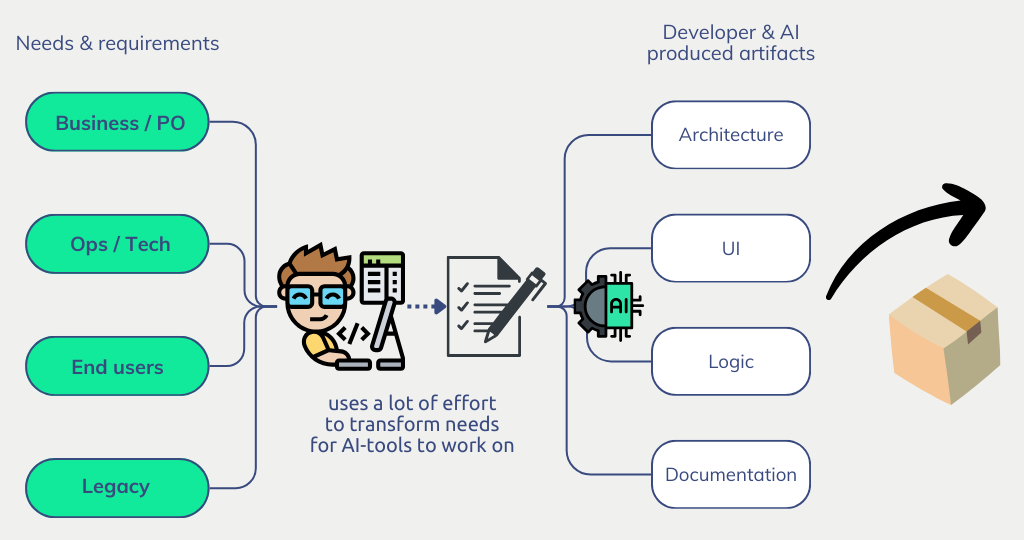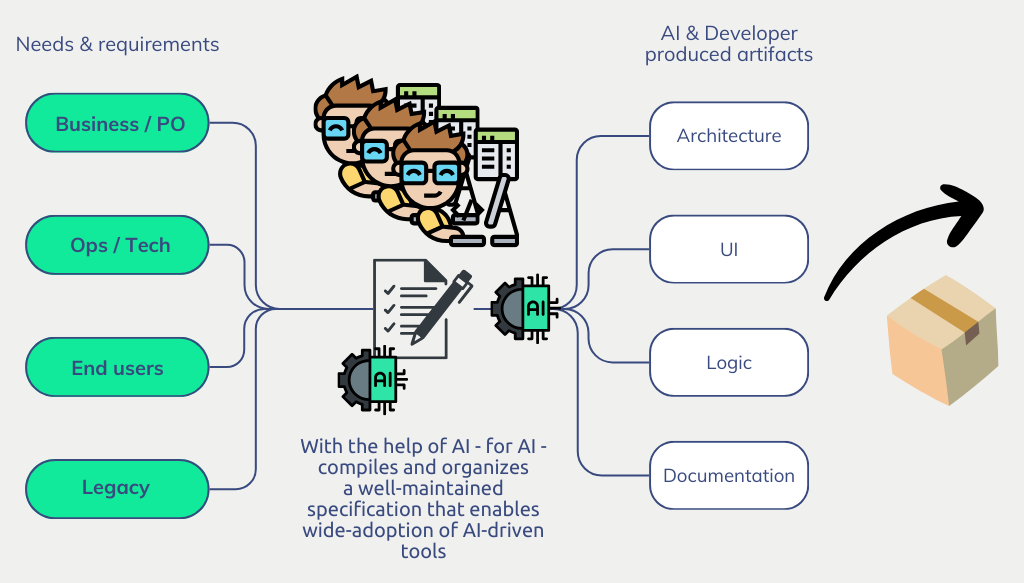When developing complex systems, one constant has been the need for a comprehensive enough specification. A coherent specification, without contradictions, has always been the backbone of successful software creation. However, the challenge has been maintaining these specifications. The absence of efficient tools made this task burdensome, leading to a gradual decline in emphasis on maintaining the documentation.
The rise of lean methodologies further shifted the focus. Emphasizing agility and responsiveness, lean methods often sidelined the significance of a written specification. Instead, developers prioritized documenting the work completed rather than encapsulating the evolving system in a detailed specification. The ethos of lean methodology streamlined processes, but inadvertently undervalued the essence of a well-documented system blueprint, leading to a potential loss in the holistic understanding of the software being developed.
Evolving landscape

Today, developers are already using generative AI tools for chosen tasks. These tools are proving to be valuable assets in boosting productivity but their use requires clear and coherent instructions from the developers.
The instructions are derived from the needs and requirements for a system that stem from various sources: the strategic objectives of businesses, insights derived from operational functions, and the feedback loop provided by end users. Translating these multifaceted needs effectively to the development team – and to the AI – is crucial for productivity.
Since the AIs are language model-based – similar to the developers themselves – they work on instructions in a human-readable format. This means the specifications, as they are, can be used as input for the generative AI tools.
Since specifications are a valuable asset to the development team – including humans and AI teammates – we need a better way of working to avoid unnecessary work by bridging the communication gap between the team members and their tools.
The way of the exploding fist

Looking ahead to the future, the landscape of software development will witness a significant renaissance. Generative AI tools will become more capable, extending beyond their current scope to encompass more areas of development such as user interface design and even the architecture of entire systems.
Within this evolving landscape, a well-maintained specification will be indispensable for the effective utilization of these advanced tools. No labored work of translating the instructions to the AI tools is needed anymore. The importance of a clear and structured requirement specification remains crucial, acting as the guiding beacon for developers, AI, and the entire team.
Moreover, maintaining and documenting the specifications does not need to be hard. Leveraging correct tools that use AI to aid in the maintenance and documentation of these specifications will become standard practice. AI-powered requirement management tools will simplify the process, streamlining the task of organizing and updating the specifications.
Organizations must adapt and embrace this renaissance in software development to retain a competitive edge and capitalize on the benefits it offers. Adapting to the changing landscape, where specifications play a central role in leveraging the potential of evolving AI tools, will be vital for optimizing and streamlining development efforts in the future.

